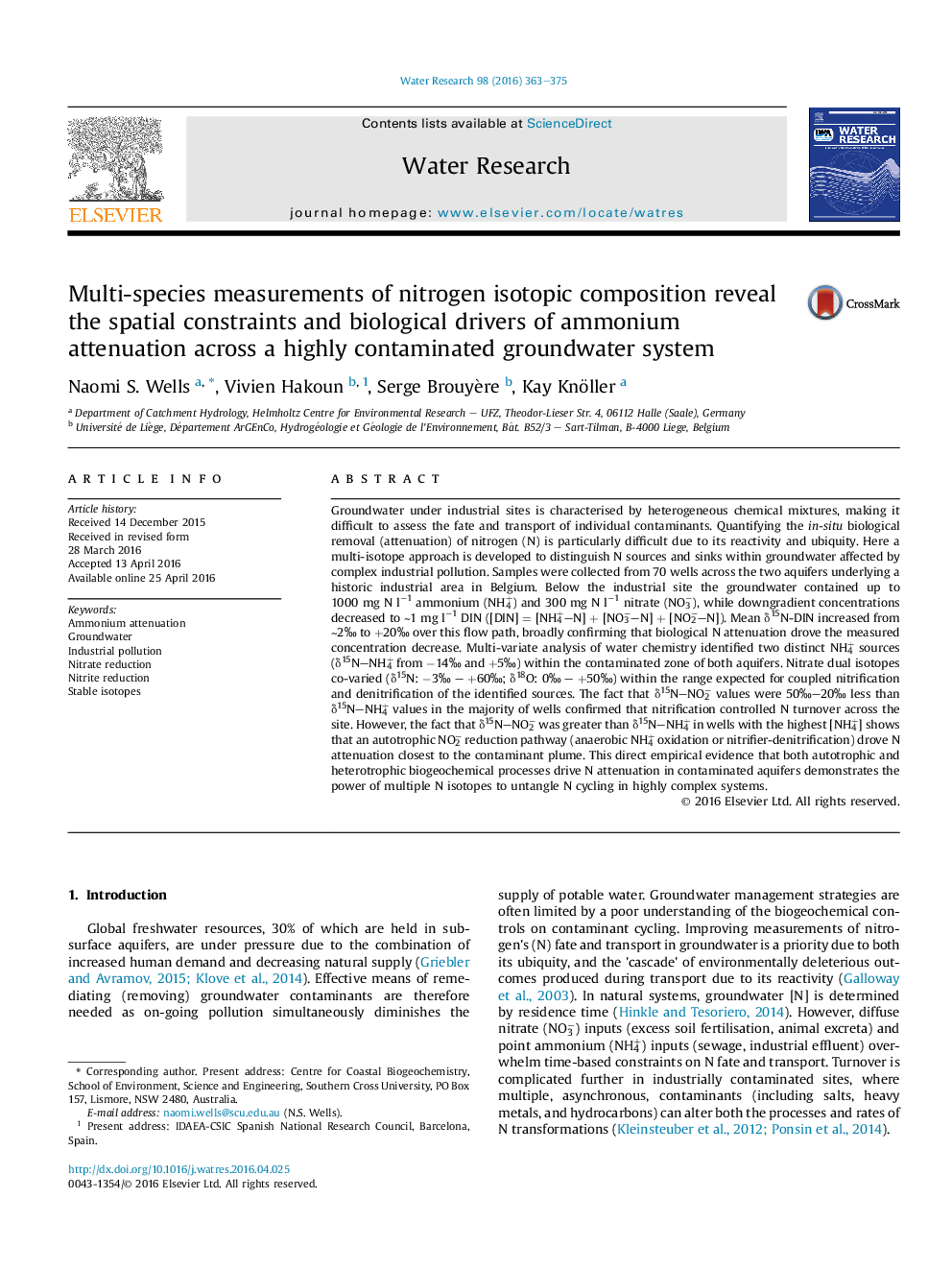| کد مقاله | کد نشریه | سال انتشار | مقاله انگلیسی | نسخه تمام متن |
|---|---|---|---|---|
| 4481003 | 1623070 | 2016 | 13 صفحه PDF | دانلود رایگان |
• Spatial isotope patterns reflect groundwater nitrogen attenuation.
• Nitrite provides process-level insight into nitrogen cycling.
• Autotrophic and heterotrophic nitrogen attenuation occurs in contaminant plumes.
Groundwater under industrial sites is characterised by heterogeneous chemical mixtures, making it difficult to assess the fate and transport of individual contaminants. Quantifying the in-situ biological removal (attenuation) of nitrogen (N) is particularly difficult due to its reactivity and ubiquity. Here a multi-isotope approach is developed to distinguish N sources and sinks within groundwater affected by complex industrial pollution. Samples were collected from 70 wells across the two aquifers underlying a historic industrial area in Belgium. Below the industrial site the groundwater contained up to 1000 mg N l−1 ammonium (NH4+) and 300 mg N l−1 nitrate (NO3−), while downgradient concentrations decreased to ∼1 mg l−1 DIN ([DIN] = [NH4+N] + [NO3−N] + [NO2−N]). Mean δ15N-DIN increased from ∼2‰ to +20‰ over this flow path, broadly confirming that biological N attenuation drove the measured concentration decrease. Multi-variate analysis of water chemistry identified two distinct NH4+ sources (δ15NNH4+ from −14‰ and +5‰) within the contaminated zone of both aquifers. Nitrate dual isotopes co-varied (δ15N: −3‰ – +60‰; δ18O: 0‰ – +50‰) within the range expected for coupled nitrification and denitrification of the identified sources. The fact that δ15NNO2− values were 50‰–20‰ less than δ15NNH4+ values in the majority of wells confirmed that nitrification controlled N turnover across the site. However, the fact that δ15NNO2− was greater than δ15NNH4+ in wells with the highest [NH4+] shows that an autotrophic NO2− reduction pathway (anaerobic NH4+ oxidation or nitrifier-denitrification) drove N attenuation closest to the contaminant plume. This direct empirical evidence that both autotrophic and heterotrophic biogeochemical processes drive N attenuation in contaminated aquifers demonstrates the power of multiple N isotopes to untangle N cycling in highly complex systems.
Journal: Water Research - Volume 98, 1 July 2016, Pages 363–375
